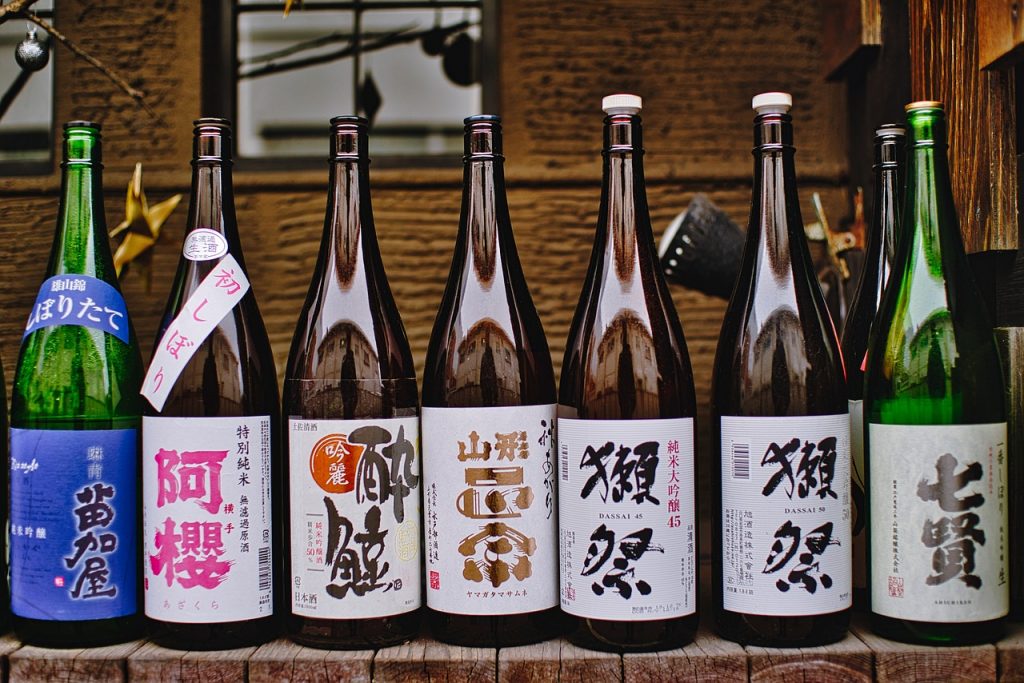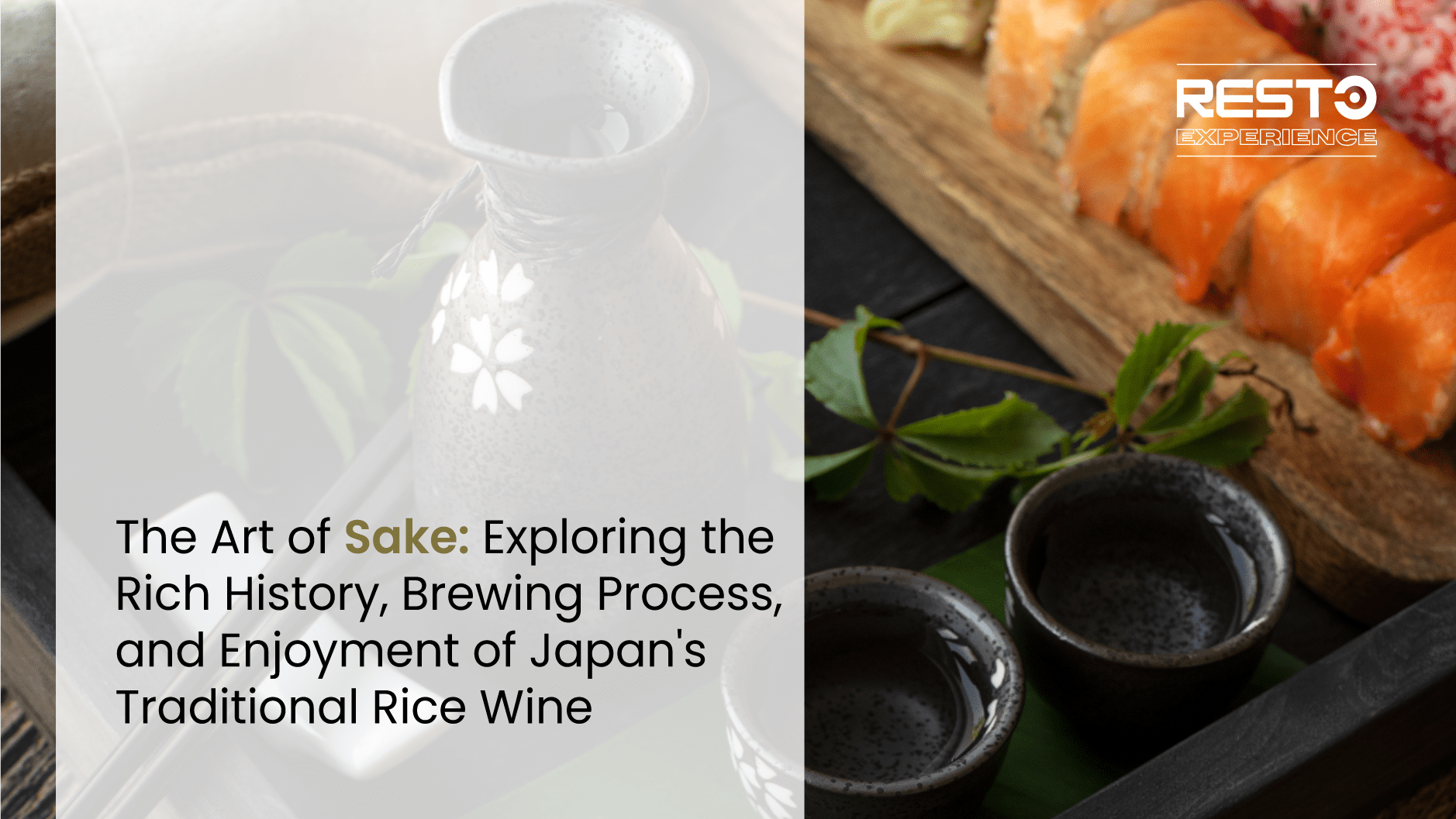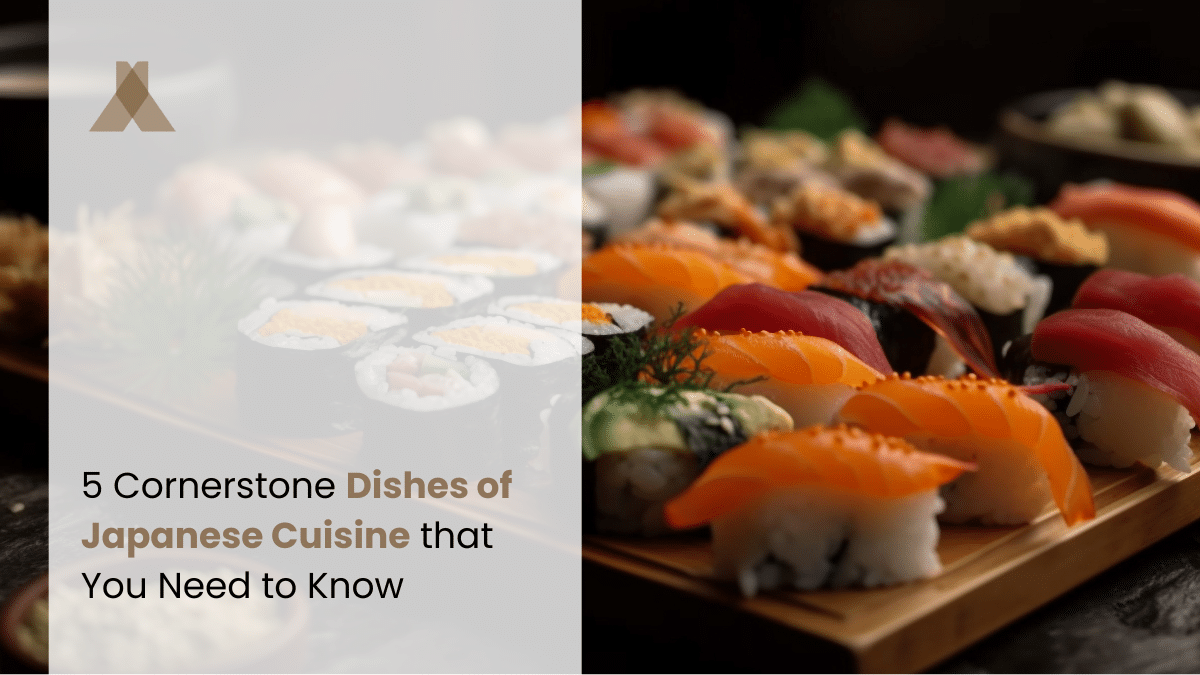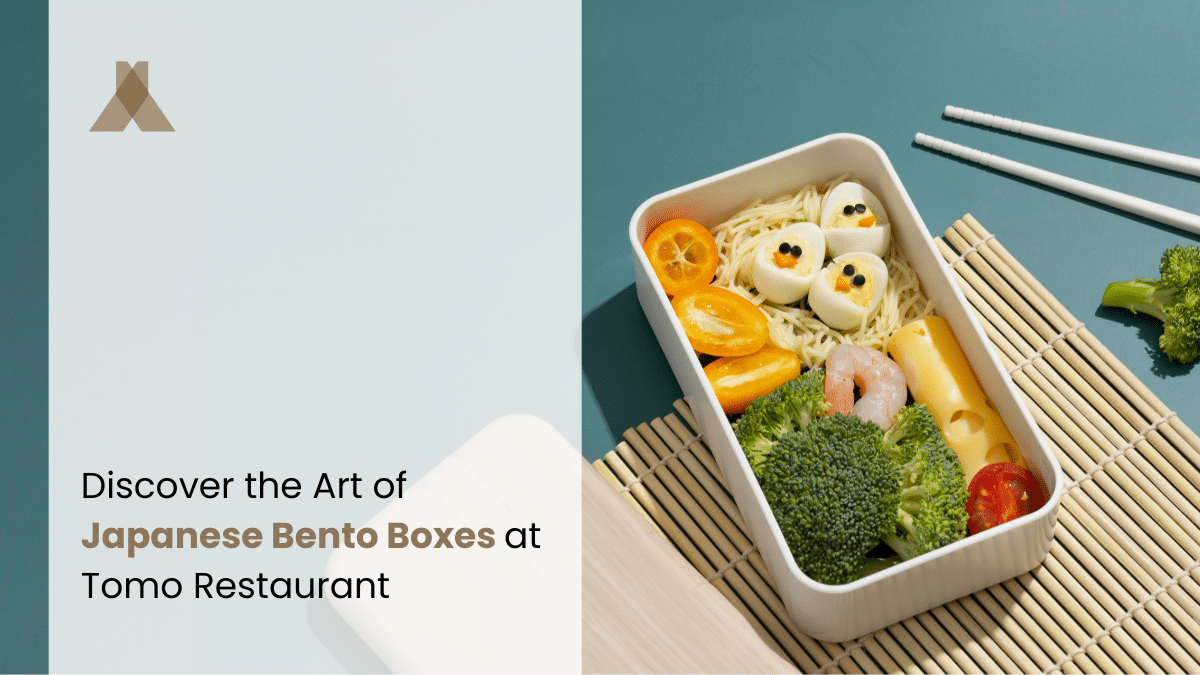Sake, the famous Japanese rice wine celebrated for centuries, is not just a drink… It’s an alchemy story, a work of art made by sake makers known as toji, and a legendary experience that goes all the way back to the gods, all at once.
Welcome to a journey through the intricate world of sake, this elixir of culture: from its captivating history with mythical origins to the meticulous brewing process, from the varied styles that excite the senses to the harmonious pairing of sake and Japanese cuisine.
Here we invite you to indulge in the wondrous sophistication of TOMO, Atlanta’s haven for lovers of traditional sake and the finest Japanese cuisine.
Unveiling the Mysteries of Sake – Japan’s Beloved Rice Wine
At the heart of Japan’s culinary heritage is the enigmatic drink known as sake. The Japanese word sake refers to any type of alcoholic beverage, but it is mainly used to refer to this fermented beverage made from rice, water, yeast and koji mushroom. In Occident, this traditional japanese drink is commonly referred to as “rice wine”.

Sake history dates back to the 3rd century, when rice began to be cultivated in Japan. Well, the combination of water and rice resulted in fermentation and mold growth in the rice… and that mold, the koji mold, turned out to be fundamental for sake production.
Although rice cannot be converted into alcohol alone because it has no sugar, the one used specifically for this beverage has a core rich in starch, which reacts to the koji and is converted into glucose. This, when combined with the fermentation of the yeast, becomes the alcoholic beverage we are interested in here.
Curious fact: this explains why the first sakes were called “mouth-chewing sake”, since they were made with chewing rice to achieve this process. In the old days, fermentation was triggered by a technique called “kuchikami” which consisted of chewing the cooked rice grains so that the wild yeasts in the mouth would begin to convert the starches into sugar. This work was reserved only for priestesses.
In the Nara period, in the 7th century, an edict of the imperial court confers the sake its sacred character. Over time, the demand for this beverage grew quickly, to the point that its price surpassed that of rice. Thus, in the 15th century, the production of large tanks greatly boosted its production, and numerous jisake (local sake) began to appear.
Sake’s Mythic Journey: From Ancient Legends to a Cultural Elixir
Of course, behind a sacred elixir like this, there are incredible stories and myths that have passed from generation to generation.
A deep-rooted myth says that the people of Nippon were attacked by an eight-headed python snake… However, the people wisely decided to offer it this drink and the animal, when drunk, retreated. It would be since then that sake is a sacred drink.
Yet, the most famous legend has it that the ancient gods brewed sake from the first rice of the new year. As we mentioned, it is literally a legendary experience on a scale of the most ancient gods.
Anyway, what can be proven is that royalty, samurai, geisha and monks have consumed it over time in Japan, and now it has become not only a drink but part of a way of life for all its inhabitants.
From fabled encounters with eight-headed pythons to the divine alchemy of gods, the stories that envelop sake are as rich and intoxicating as the drink itself. Sake it’s a real cultural elixir indeed.
The Brewing Process: From Rice to Elixir – How Sake is Crafted with Precision and Care
The sake brewing process consists of transforming the simple grains of rice into the liquid elixir known as sake. Step into this world of artistry and precision as we explore the careful steps that culminate in the creation of this sacred elixir.
- The Alchemy of Sake Brewing
Behind the scenes of every sake bottle lies a fascinating tale of transformation. The sake brewing process begins with the selection of premium rice grains, meticulously polished to reveal their hidden essence.
The polished rice is then subjected to the rice fermentation, which unlocks the sugars and starches within, laying the foundation for the what’s ahead.
- Koji Mold: The Secret Alchemist
Koji mold is the key ingredient that imparts depth and complexity to sake. This is a filamentous fungus, cultivated with utmost care and precision. Its role is to break down the starches in the rice, converting them into fermentable sugars.
This meticulous process requires the perfect balance of temperature and humidity, a dance choreographed by skilled artisans who have honed their craft over generations.
- Yeast Fermentation: From Sugars to Symphony
With the sugars primed and ready, the spotlight shifts to yeast fermentation. This is where science meets art, where microscopic organisms work their magic, transforming sugars into alcohol and infusing the brew with a symphony of flavors and aromas.
This process can be more or less rapid and uses different temperatures depending on the beverage to be obtained. The temperature and timing of this process are fine-tuned by sake makers. Sake makers are known in Japan as “Toji”, the ones in charge of supervising the winemaking process, similar to the enologist in wine.
Cooking is an art, indeed, but crafting sake is an art that resembles the work of gods.
At TOMO, Atlanta’s haven of culinary sophistication, we invite you to experience the legacy of tradition that truly defines this Japanese rice wine.
Discovering Different Types and Grades of Sake: A Journey Through Aromatic Profiles and Flavors
The current system for classification determined by the National Tax Agency of Japan differentiates three sake varieties. In each case we can find distinct aromatic profiles in sake.
- Ginjo-shu
This sake is brewed from a highly polished type of rice that is fermented for a long time at a low temperature. This type of sake is considered the most difficult to brew and in the past was hard to find.
Its aroma and fruity character are part of its distinction with a delicate taste. It’s recommended to serve it chilled to retain the flavor.
A variant of this sake is Daiginjo-shu, made with more polished rice, from which more than 50% of the outer layer has been removed. It has an even more refined flavor and the ginjo-ka is even more predominantly felt.
- Junmai-shu
Junmai-shu is our classic, made from a type of steamed rice inoculated with the koji-kin. The enzymes in this mold convert the starch in the rice into sugar, which later serves as food for the yeast and fuels the fermentation process.
There is no obligation to polish the rice and generally the product is relatively high in acidity and umami, while being less sweet.
- Honjozo-shu
Honjozo-shu has distilled or fermented sugarcane alcohol called jozo-alcohol added to its composition, and serves to enhance the flavor of the sake.
This alcohol is added before filtering the Moromi mash (rice fermenting mixture) to soften the flavor. This sake is best served hot.
From the traditional junmai-shu to the innovative daiginjo-shu, each sip is a step closer to understanding the art that elevates sake to an incomparable experience.
Enhance your dining experience as you savor the legacy of sake brewers who pour their passion into each bottle, creating an elixir that will definitely stamp your night.
Savoring the Traditions: Appreciating the Art of Drinking Sake and Pairing it with Japanese Cuisine
In formal situations, there is strict sake drinking etiquette. The most important rules are never to refill your own cup and to ensure every cup on the table remains filled. Also, after receiving the sake, at least one sip should be taken before leaving it on the table.
In casual situations, the rules are not as rigid. However, the sake tasting experience is a ritual that speaks to the shared values of Japanese culture. Sipping the drink slowly allows the flavors to unfold gently on the palate. Just take your time, engage your senses, and let the elixir weave its tale.
And, of course, the beauty of it lies not only in its individuality but also in its ability to complement and elevate a real Japanese cuisine. Pairing makes perfection.
The classics such as sushi, sashimi and tempura are joined by cheese, oysters or any vegetable as great accompaniments. Sake, having considerably more umami than other beverages, can enhance the flavor of hearty dishes such as stews, ramen and steak.
Picture it: the crispness of junmai-shu resonating with the clean simplicity of sashimi, the floral notes of ginjo-shu heightening the elegance of sushi rolls, and the delicate crunch of tempura meeting the umami-rich junmai-shu.
Allow the rituals of etiquette to guide you and the pairing it with Japanese cuisine to transport across the globe sip by sip.
Exploring Regional Delights: Uncovering the Unique Styles and Terroir of Sake across Japan
Although this drink is produced in nearly every prefecture, some places are particularly famous for their jisake, which, as we saw before, is the local variety. Join us on a voyage of discovery as we traverse the map of regional sake variations, where each style is a testament to the terroir and culture that shape their unique essence.
- Niigata Sake
Niigata, nestled against the Sea of Japan, is a region renowned for its abundant snowfall and pristine water sources. These elements contribute to the distinct Niigata style of sake: clean, crisp, and refreshing. The cold winters give rise to slow fermentation, allowing for the development of delicate flavors and a subtle sweetness.
- Hiroshima Sake
Hiroshima, known for its lush landscapes and warm climate, gives birth to sake that mirrors its bold character. Hiroshima style is rich and full-bodied. This version is sweet with a mild character, completely contrary to the refined and dry one from Niigata prefecture.
- Kyoto Sake
Kyoto style sake is velvety, balanced, and meticulously crafted. The water from the city’s famed Fushimi springs lends a softness to the drink, allowing the delicate flavors to shine.
The Future of Sake: Embracing Innovation while Preserving Tradition
Of course, nowadays we are just a click away from knowing the landscapes of the most diverse and distant places. You can even walk the streets of Niigata, Hisoshima or Kyoto with Google maps.
But there is something that virtuality cannot convey: the authentic taste of local cuisines (or, more precisely, the authentic taste of a culture). In the heart of Atlanta, TOMO Restaurant stands as a sanctuary for those who revere the timeless charm of traditional sake.
Here, the legacy of this drink is celebrated and its future is embraced with open arms. As the world evolves, so does the craft of sake, ensuring that the essence of this liquid art continues to enchant palates and hearts around the world.
So if you’re looking for a flight to Japan without all the hustle and bustle of the airport, head to TOMO and visit your magical Japanese corner in Atlanta. You’ll definitely feel like the gods.





